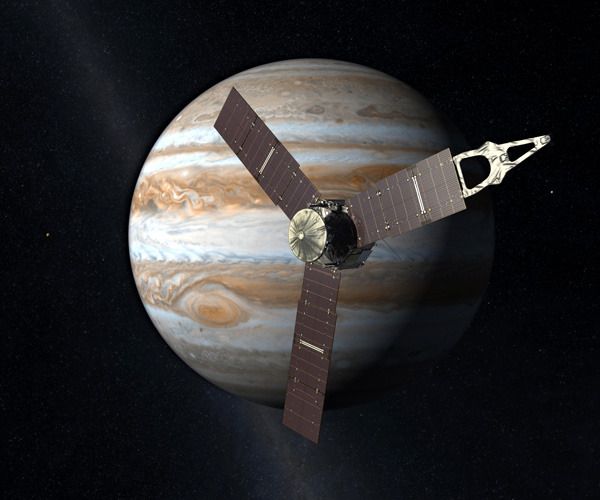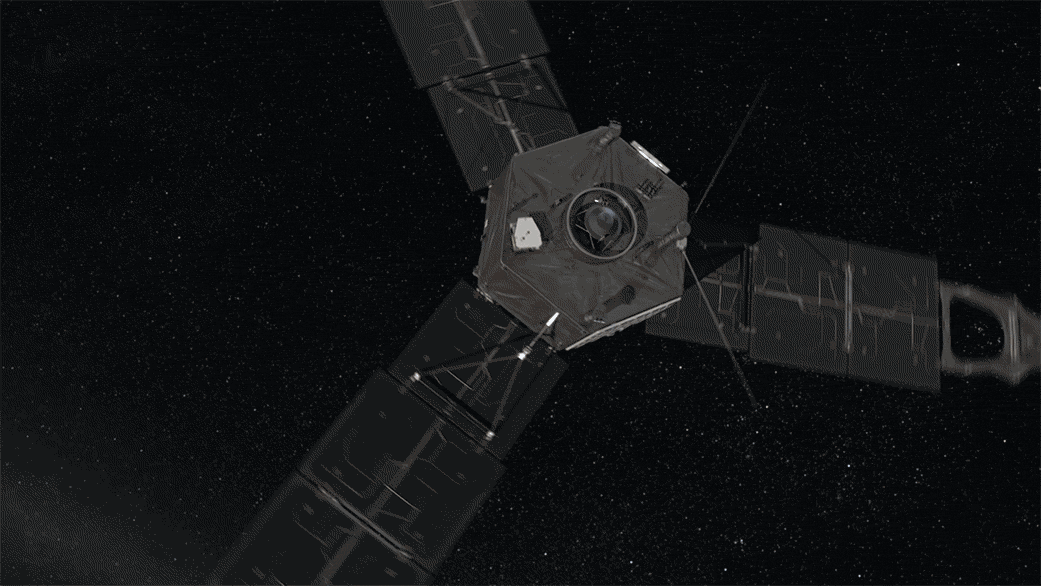
NASA / JPL - Caltech
NASA’s Juno Spacecraft Burns for Jupiter (Press Release)
NASA's solar-powered Juno spacecraft successfully executed a maneuver to adjust its flight path today, Feb. 3. The maneuver refined the spacecraft’s trajectory, helping set the stage for Juno's arrival at the solar system’s largest planetary inhabitant five months and a day from now.
"This is the first of two trajectory adjustments that fine tune Juno’s orbit around the sun, perfecting our rendezvous with Jupiter on July 4th at 8:18 p.m. PDT [11:18 p.m. EDT]," said Scott Bolton, Juno principal investigator at the Southwest Research Institute in San Antonio.
The maneuver began at 10:38 a.m. PST (1:38 p.m. EST). The Juno spacecraft's thrusters fired for 35 minutes, consumed about 1.2 pounds (.56 kilograms) of fuel, and changed the spacecraft's speed by 1 foot (0.31 meters), per second. At the time of the maneuver, Juno was about 51 million miles (82 million kilometers) from Jupiter and approximately 425 million miles (684 million kilometers) from Earth. The next trajectory correction maneuver is scheduled for May 31.
Juno was launched on Aug. 5, 2011. The spacecraft will orbit the Jovian world 33 times, skimming to within 3,100 miles (5,000 kilometers) above the planet's cloud tops every 14 days. During the flybys, Juno will probe beneath the obscuring cloud cover of Jupiter and study its aurorae to learn more about the planet's origins, structure, atmosphere and magnetosphere.
Juno's name comes from Greek and Roman mythology. The god Jupiter drew a veil of clouds around himself to hide his mischief, and his wife -- the goddess Juno -- was able to peer through the clouds and reveal Jupiter's true nature.
NASA's Jet Propulsion Laboratory, Pasadena, California, manages the Juno mission for the principal investigator, Scott Bolton, of Southwest Research Institute in San Antonio. Juno is part of NASA's New Frontiers Program, which is managed at NASA's Marshall Space Flight Center in Huntsville, Alabama, for NASA's Science Mission Directorate. Lockheed Martin Space Systems, Denver, built the spacecraft. The California Institute of Technology in Pasadena manages JPL for NASA.
Source: NASA.Gov
****

NASA / JPL - Caltech

No comments:
Post a Comment